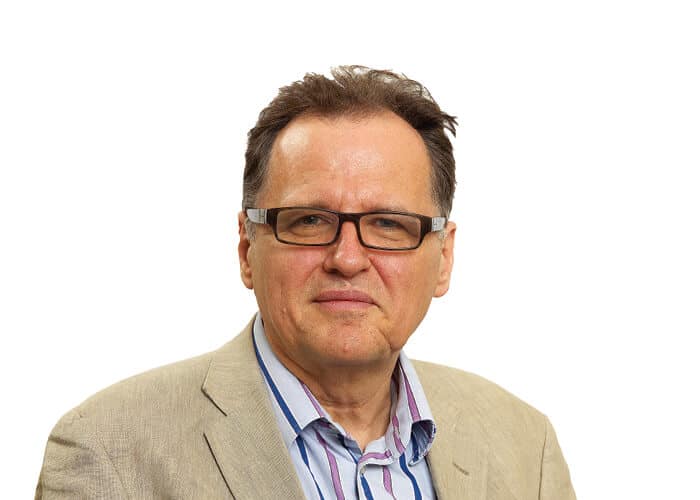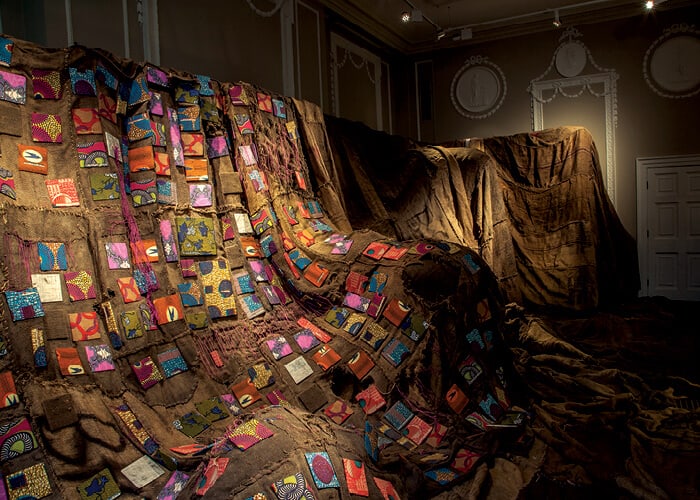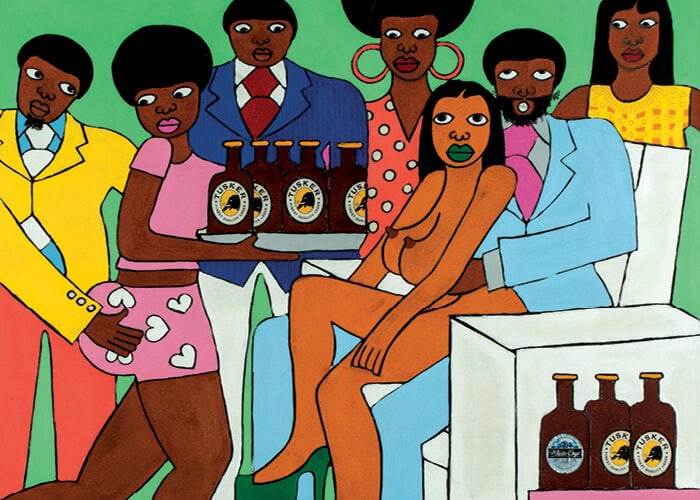Ed Cross is the founder of Ed Cross Fine Art, a London-based gallery that specialises in art from Africa and its diaspora. ART AFRICA spoke to him about his recent sales at the Auction Room in London to find out more about current trends in the international art market, as well as the role of the collector and platforms like 1:54 and AKAA.
 Ed Cross. Image Courtesy of Ed Cross.
Ed Cross. Image Courtesy of Ed Cross.
ART AFRICA: How did your latest auction compare with previous Africa-focused auctions? Can you give us some insight into your latest auction results?
Ed Cross: This was one of our best auctions yet in terms of the quality of works presented. We don’t publish results as such, but it’s fair to say that the contemporary African market is a challenging one and anyone in it has to be prepared for the long game. The Auction Room is now part of a group of auction houses and operates out of one of the most prestigious locations in Mayfair, the magnificent Ely House on Dover St. We stage stand-alone exhibitions – recently the successful show, ‘No more Candy,’ by Congolese artist Aime Mpane and Out of Bounds, a major installation by the acclaimed Ghanaian artist, Ibrahim Mahama – as well as other events around our auctions. Our business model is evolving to take account of opportunities offered by our unique new location.
Can you elaborate on the market’s current appetite for contemporary art from Africa – given current global financial challenges and the strength of the pound – especially considering the The Auction Room’s focus on ‘middle markets’?
I don’t think we have confined ourselves to middle markets and have had notable success with higher value works, such as Home Sweet Home by Pascale Marthine
Tayou, which sold earlier this year for £31,000. I think our estimates are very competitive so I don’t think the current rise in Sterling has had much impact on us. I suspect that the current oil price-related economic crisis in Nigeria and the welcome anti-corruption drive by the country’s new president has put the brakes on Nigerian purchases to some extent. No doubt this is only a small blip though.
 Ibrahim Mahama, Untitled, 2013. Jute sacks, wax cloth, dimensions variable.
Ibrahim Mahama, Untitled, 2013. Jute sacks, wax cloth, dimensions variable.
Do you think there are any potential ‘super collectors’ who could drive interest in contemporary art from Africa? Do you think this is what it’s going to take to fast track a more mainstream interest in contemporary art from Africa?
Yes I think there are quite a number of international collectors who have hitherto not looked at Africa and are now actively engaged in plugging the gap. Some of these may well go further and assemble significant collections but I think we are all looking for a sustainable market. Nobody wants to see a bubble. We have been there with other markets, but for better or worse we are unlikely to see that in the African market.
When you think about the extent to which the ‘middle classes’ in Africa are set to expand over this century as economic development powers on from what is still a relatively low base – the size and strength of the market should increase exponentially over time. In the end, it’s about individual
artists and their work – that’s what is going to count. Fortunately we have some really strong artists from the continent (and diaspora) producing work that is distinct and really exciting.
Have auction results been aided in any way through the introduction of fairs like 1:54 and the new Also Known As Africa (AKAA) art fair, launching in Paris in December 2015? Are these niched fairs sustainable or should galleries and artists be participating in the mainstream fairs rather?
This is a very good question. As a participating dealer I can vouch for the success of 1:54 which is an incredibly vibrant and commercially successful fair. I think this speaks for itself – there is a need for these kinds of fairs and there is a growing market for the art offered there. I think the simple answer is that artists and galleries should, wherever possible, be in both the mainstream and the geographically-focused fairs. As the African market gets stronger, so artists and galleries who have avoided these fairs will rethink and want to be part of their success – and the African brand will become stronger and stronger over the years. It’s a very paradoxical situation, but that’s life.
 Ephrem Solomon, Homesickness, 2011. Woodcut and collage, 67 x 67cm.
Ephrem Solomon, Homesickness, 2011. Woodcut and collage, 67 x 67cm.
You have extensive experience in East Africa and, as a gallerist and dealer, you understand the challenges when it comes to building the profile of artists andtheir work. What in your opinion is most needed in order to advance the interest in and profile of art and artists from Africa?
Platforms for constructive critique and access to information about global art history are some of the most important factors. Good gallerists and dealers, strong grass root artist organisations, improved museums, and – last but not least – a way of overhauling the academic study of art which at times does more harm than good.
Are there any market trends that have emerged over the past couple of years that you feel are worth taking note of and which artists in particular do you think we should be looking out for?
I am not sure about trends – I don’t really see things that way. The market is big enough to see very different kinds of artists break through to the super league, from painters like Lynette Yiadom-Boakeye to ‘found material’ masters like El Anatsui. As for artists to look out for, I may be a bit biased as I represent artists such as Mario Macilau, Nathalie Bikoro and Kimathi Donkor who are all going from strength to strength. I would recommend buying their work whilst it is still relatively affordable!
 Michael Soi, Heaven Can Wait, 2011. Acrylic on canvas, 140 x 140cm. All images courtesy of Ed Cross Fine Art.
Michael Soi, Heaven Can Wait, 2011. Acrylic on canvas, 140 x 140cm. All images courtesy of Ed Cross Fine Art.



